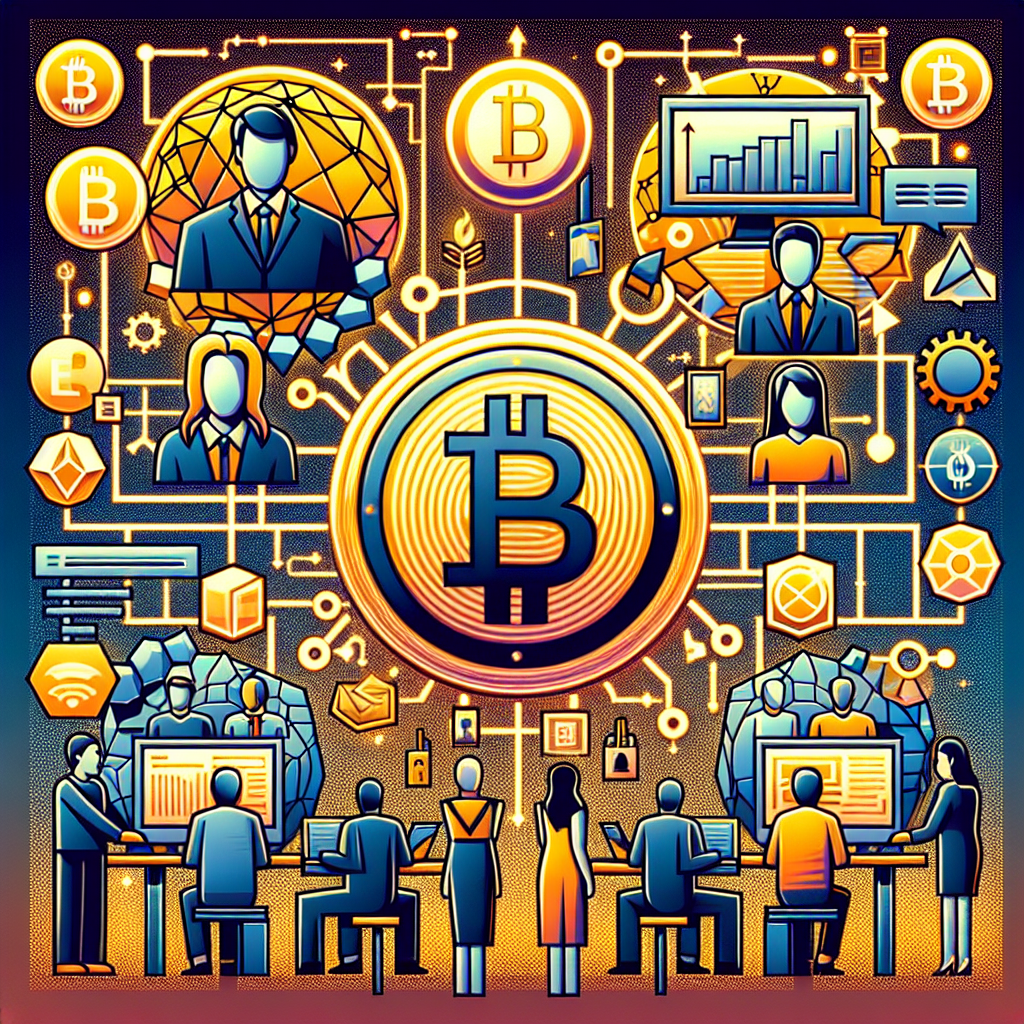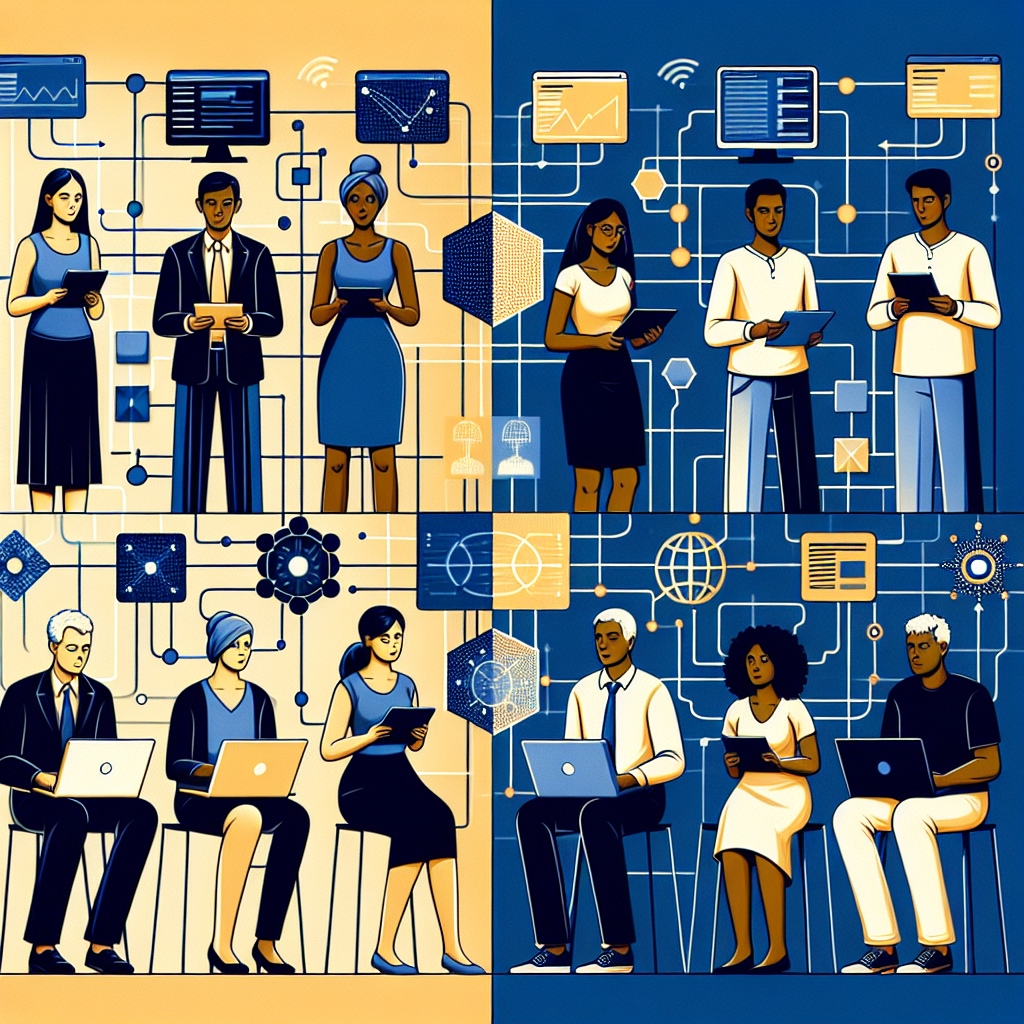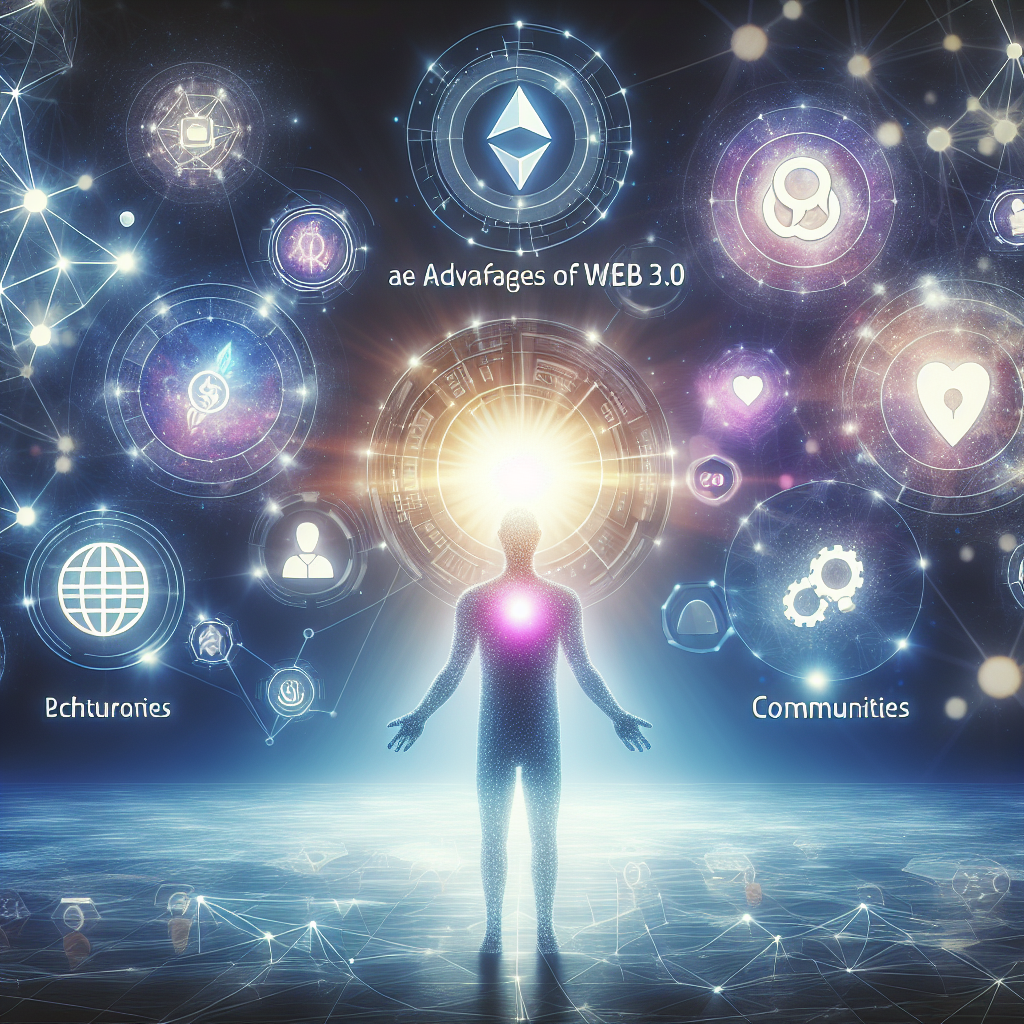Exploring Web 3.0: Understanding the Ecosystem, History, and Its Importance for Everyone
What is the Web 3.0 Ecosystem? Understanding the Next Generation of the Internet

Welcome to the exciting world of the Web 3.0 ecosystem! ⭐ But what does that really mean? Simply put, Web 3.0 represents the next evolution of the internet as we know it, breaking free from traditional models and reshaping our online experiences. Equipped with decentralized technologies, AI, and blockchain, Web 3.0 empowers individuals like you and me to interact with the digital world in more meaningful ways. Well dive into the details, so you’ll understand why Web 3.0 is essential for our future. But first, lets break it down.
What is Web 3.0: Definition and Importance
Web 3.0 refers to a decentralized internet where users control their data, identities, and transactions without relying on big corporations. This shift is crucial because, currently, a small number of companies control a massive portion of our online interactions. For instance, in 2022, over 60% of online traffic was dominated by just 10 websites! By adopting Web 3.0 principles, we can reclaim our privacy and enhance security.
Examples for Better Understanding
- Imagine creating a digital art piece and selling it as an NFT (Non-Fungible Token) without the need for intermediaries. This can bring a fairer compensation directly to you, the artist. ⭐
- Consider a social media platform that rewards users with cryptocurrency for their content, instead of profiting solely from advertising, giving you more power and financial rewards. ⭐
When Did Web 3.0 Start?
Initial discussions about Web 3.0 began around 2006, but it gained traction with the rise of blockchain technology and cryptocurrencies. Today, you can see it growing rapidly with projects like Ethereum and Polkadot. ⭐
How Does Web 3.0 Differ from the Modern Internet?
The transition from the modern internet to Web 3.0 is like upgrading from a basic flip phone to a cutting-edge smartphone. Here are some key differences:
| Feature | Modern Internet | Web 3.0 |
|---|---|---|
| User Control | Limited | Full control |
| Data Ownership | Centralized | Decentralized |
| Identity Privacy | Low | Enhanced |
| Financial Transactions | Bank as intermediary | Direct peer-to-peer |
| Content Monetization | Corporate rewards | User rewards |
| Community Governance | None | Yes |
| Security Standards | Variable | Higher |
| Innovation Rate | Stable | Rapid |
| Decentralization | No | Yes |
| Transparency | Opaque | Clear |
Statistical Insights
Did you know that over 75% of Internet users are concerned about their privacy online? With Web 3.0, these concerns can become a thing of the past. More than ever, users value security, and studies show that 82% of consumers are willing to share their data if they know where it goes and how it’s used.
Client Stories: Real-World Scenarios
Let’s look at Lisa, a graphic designer who faced challenges with her online portfolio on a traditional platform. Frustrated with limited visibility and low earnings, she turned to our company, Zuniweb Studio. We helped her create a decentralized portfolio using Web 3.0 technologies. Now, she not only enjoys greater autonomy over her work but also earns significantly more through direct sales and commissions!
Another success story is Mark, a fan of collectible cards. Mark used to face issues with trust while buying and selling cards online. After we implemented an NFT solution for him, he now trades with confidence—thanks to blockchains transparency. Each transaction can be verified, ensuring he gets what he pays for without a middleman. ⭐
Expert Advice on Managing Your Transition to Web 3.0
Transitioning to the Web 3.0 ecosystem might seem daunting. Here are some expert tips to ease the process:
- Regularly update your software to protect your digital assets. ⭐
- Consider using secure wallets for your cryptocurrencies, as they provide higher security against hacks.
- Engage in forums and communities focused on Web 3.0 innovations to stay informed on best practices. ⭐
If you’re intrigued by the potential of the Web 3.0 ecosystem and wish to explore how it can benefit your business, reach out to us at Zuniweb Studio. With 20 years of experience, our professional specialists provide all the services you need in one place! Get in touch at Go Telegram Chat, or visit our website zuniweb.com to learn more. The future of the internet awaits, and we are here to help you navigate it! ⭐
Frequently Asked Questions
- What is Web 3.0? Web 3.0 is the next generation of the internet, emphasizing decentralized technologies, data ownership, and greater user control.
- What are the benefits of Web 3.0? Benefits include enhanced privacy, data security, and direct financial interactions.
- How does Web 3.0 work? Web 3.0 works through decentralized networks, allowing users to control their data and engage without intermediaries.
- Is Web 3.0 safe? Yes, with its security features and decentralized model, Web 3.0 offers improved safety compared to traditional web systems.
- Can anyone use Web 3.0? Absolutely! Web 3.0 technologies can be utilized by anyone interested in leveraging decentralized and secure Internet solutions.
- When did Web 3.0 start? The concept has been around since the mid-2000s, but it began gaining significant traction with blockchain advancements in recent years.
- What is a blockchain? A blockchain is a distributed ledger technology that records transactions across many computers securely.
- What are NFTs? NFTs or Non-Fungible Tokens are unique digital assets stored on the blockchain, often representing digital art or collectibles.
- How can I transition to Web 3.0? Consult with professionals like Zuniweb Studio to understand the necessary steps and technologies.
- Why is Web 3.0 important? It provides individuals with more control over their data and online interactions, promoting privacy and democratizing opportunities.
What is Web 3.0: Its Definition, History, and Why We All Need It for Future Growth
contact us
Game apps can be really expensive to build and maintain, but don’t worry, we do everything in our mix to ensure that you get the best, for the best cost.

Have you heard the buzz about Web 3.0? It’s more than just a trend—it’s a transformative leap in how we interact with the digital world. So, what exactly is Web 3.0? Lets break it down in simple terms. Web 3.0, also referred to as the Internet 3.0, represents a new era of the internet that leans heavily on decentralization, user empowerment, and innovative technologies like blockchain and artificial intelligence (AI). Imagine a place where you own your data, your online experiences are personalized, and digital transactions are transparent and secure. Sounds appealing, right? Lets delve deeper!
A Brief History of Web 3.0
The roots of Web 3.0 can be traced back to the early 2000s, when visionary thinkers like Tim Berners-Lee laid the groundwork for a more user-centric internet. It began gaining traction around 2006 but really surged in popularity thanks to the advent of blockchain technology, culminating in the rise of cryptocurrencies like Bitcoin and Ethereum. These technologies form the backbone of decentralized applications (dApps) that aim to remove central authorities from transactions and data control.
Key Milestones in the Evolution of Web 3.0:
- 2006: Conceptualization of Web 3.0 as a decentralized web.
- 2008: Bitcoin is introduced, signaling the first successful use of blockchain technology.
- 2015: Ethereum launches, enabling developers to create smart contracts and deploy dApps.
- 2021: Mainstream adoption of NFTs brings the possibilities of digital ownership to the forefront.
- 2023: Ongoing innovations in AI and machine learning further personalize user interactions.
Why We All Need Web 3.0 for Future Growth
As we shift into this new digital realm, the importance of Web 3.0 becomes increasingly clear. Here are a few compelling reasons why we should embrace it:
- Data Ownership: In Web 3.0, you are no longer just a user but the rightful owner of your data. This means you can control how it’s used and shared, reducing the risk of privacy breaches.
- Financial Inclusion: Using cryptocurrencies allows people across the globe to participate in the economy, regardless of their banking situation. Over 1.7 billion adults are unbanked—Web 3.0 aims to change that! ⭐
- Decentralized Governance: Community-driven projects, often governed by voting mechanisms called DAOs (Decentralized Autonomous Organizations), empower you to have a say in decisions affecting your digital experiences.
- Improved Security: With blockchain’s encryption technology, data and transactions become more secure, drastically reducing the risk of hacks or fraud. ⭐
- Innovation at Scale: Web 3.0 fosters innovation by allowing developers to create decentralized applications that have the potential to disrupt traditional industries, from finance to healthcare. ⭐
Statistical Insights
To reinforce the significance of adopting Web 3.0 principles, consider these statistics: 85% of users believe that they should control their personal data, and 60% are interested in exploring decentralized finance (DeFi) applications. These figures highlight a growing concern for privacy and individuality in the digital space.
Real-World Examples of Web 3.0 Applications
To make the concept more relatable, let’s reflect on a couple of real-world Web 3.0 applications:
- Decentralized Finance (DeFi): Platforms like Uniswap and Aave enable users to borrow, lend, and trade cryptocurrencies without third-party interference, often yielding higher returns than traditional banking systems.
- Decentralized Identity Solutions: Projects like SelfSo or uPort allow users to manage their digital identities on the blockchain, enhancing privacy and security while streamlining access to services.
As we can see, the potential of Web 3.0 is immense, and its applications are limitless. While were witnessing a gradual shift, the full realization of this new web will take time and collaboration across industries. At Zuniweb Studio, with over 20 years of experience, our professional specialists can guide you through the Web 3.0 ecosystem and integrate its principles into your business strategy effectively! ⭐ If you’re ready to explore the endless possibilities of Web 3.0, contact us at Go Telegram Chat or visit our site at zuniweb.com. Let’s take your digital journey to the next level!
Frequently Asked Questions
- What is Web 3.0? Its a new era of the internet focused on decentralization and user empowerment.
- What technologies support Web 3.0? Blockchain, AI, and decentralized applications are key technologies behind Web 3.0.
- Why is data ownership important? Data ownership ensures users have control over their information, safeguarding privacy.
- How does Web 3.0 improve security? By utilizing blockchain technology, data becomes encrypted and transactions are transparent.
- What are DAOs? Decentralized Autonomous Organizations are community-governed entities that make collective decisions.
- Is Web 3.0 accessible to everyone? Yes! It aims to democratize access to the digital economy for all users.
- What is DeFi? Decentralized Finance allows users to perform financial transactions without an intermediary.
- How can I participate in Web 3.0? You can start exploring decentralized applications and blockchain technologies.
- What is the future of Web 3.0? It promises a more secure, inclusive, and user-centric digital landscape.
- Where can I learn more about Web 3.0? Follow technology blogs, forums, and consult with professionals like those at Zuniweb Studio.
What is Web 3.0 in Simple Terms? Breaking Down Complex Concepts for Everyone
contact us
Game apps can be really expensive to build and maintain, but don’t worry, we do everything in our mix to ensure that you get the best, for the best cost.

Have you ever felt overwhelmed by the technical jargon surrounding the term Web 3.0? You’re not alone! Many people hear buzzwords like “decentralization,” “blockchain,” and “smart contracts” but aren’t quite sure what they mean. ⭐ So, let’s break it down into simple, relatable ideas that anyone can grasp.
Web 3.0 Explained: The Basics
At its core, Web 3.0 is the next stage in the evolution of the internet. Think of it like an upgrade to your favorite smartphone—it brings new features that enhance your experience. In simpler terms, Web 3.0 aims to create a more user-friendly and equitable online environment where YOU have more control over your data and interactions.
Key Characteristics of Web 3.0
- Decentralization: Traditional websites and applications rely on central servers controlled by companies like Google or Facebook. In contrast, Web 3.0 uses decentralized networks, meaning no single entity holds power over your data. Imagine being able to access your favorite social media platform without being subject to strict content rules! ⭐️
- Ownership of Data: With Web 3.0, you can own your data and decide how it’s shared. This is akin to owning your own house rather than renting from someone else. You control who comes in and who uses your space.
- Smart Contracts: These are self-executing contracts with terms written into code. Think of a vending machine: you put in money and select your snack, and the machine automatically gives you the item. Similarly, smart contracts automatically execute transactions when certain conditions are met.
Unique Features of the Web 3.0 Ecosystem
Web 3.0 introduces several innovations that collectively reshape our online interactions. Here are a few:
- Peer-to-Peer Transactions: You can send or receive money directly without a bank or financial institution taking a cut. For example, if you sell artwork online, you can receive cryptocurrency directly from the buyer without fees! ⭐
- Interoperability: Different platforms and applications can work together seamlessly. Imagine you can swap your in-game items from one game to another without issues. How cool is that? ⭐
- Enhanced Security: Thanks to blockchain technology, transactions are more secure, reducing risks of fraud or hacking attempts. Imagine a digital vault that only you can access! ⭐
Real-World Comparison: Traditional Internet vs. Web 3.0
| Aspect | Traditional Internet | Web 3.0 |
|---|---|---|
| Data Control | Stored by companies | User-controlled |
| Transactions | Involves third parties | Directly between users |
| Content Creation | Centralized platforms | Decentralized and community-driven |
| Accountability | Limited | Transparent and traceable |
| Access | Restricted | More open and accessible |
The Importance of Web 3.0 for Everyone
As we dive deeper into the digital age, Web 3.0 is essential for several reasons:
- Empowerment: By giving people control over their data, everyone has a stake in the digital economy. ⭐
- Financial Inclusion: Web 3.0 technology can reduce barriers to entry for those unbanked or underbanked. Just imagine someone in a remote area having the same access to economic opportunities as someone in a metropolitan city! ⭐
- Better User Experiences: With personalized content and services that understand user preferences, your online experience will feel more intuitive and relevant.
How Can You Get Involved in Web 3.0?
Getting involved in Web 3.0 is easier than you think! Here are a few steps you can take:
- Educate Yourself: Follow articles, attend webinars, or take courses to get a grip on decentralized technologies.
- Experiment: Try using decentralized applications (dApps) for finance, social media, or other services to experience Web 3.0 firsthand.
- Engage: Join communities focused on Web 3.0 innovations. Online forums and social media groups are great places to start.
At Zuniweb Studio, we specialize in guiding businesses through the Web 3.0 ecosystem. With over 20 years of experience, our professional specialists can help you seamlessly transition into this exciting new world! If you’re interested in exploring how Web 3.0 can benefit your business, don’t hesitate to contact us at Go Telegram Chat or visit our website at zuniweb.com. Let’s take your digital journey to new heights together! ⭐
Frequently Asked Questions
- What does Web 3.0 mean in simple terms? Web 3.0 is a new era of the internet focused on user control, decentralization, and enhanced security.
- How does Web 3.0 differ from Web 2.0? Web 2.0 is centered around centralized platforms, while Web 3.0 empowers users to control their data and interacts without intermediaries.
- What are decentralized applications (dApps)? dApps are software applications that run on a blockchain network, allowing user interactions without relying on a central authority.
- Can I own my data in Web 3.0? Yes! Web 3.0 enables users to have ownership and control over their personal data.
- What is a smart contract? Smart contracts are self-executing agreements coded on blockchains, facilitating automatic transactions once agreed conditions are met.
- Is Web 3.0 only for tech-savvy individuals? No! While technical knowledge can help, there are plenty of user-friendly applications geared toward everyone.
- How can I start using Web 3.0? Begin by exploring decentralized applications and contributing to discussions in Web 3.0 communities.
- What are the benefits of Web 3.0 for businesses? Enhanced security, reduced costs, and greater consumer trust are some benefits for businesses adopting Web 3.0.
- How can I keep my data safe in Web 3.0? Utilizing decentralized storage solutions and being mindful of sharing sensitive information can help keep your data secure.
- Where can I learn more about Web 3.0? Explore online resources, attend webinars or consult experts in the field like those at Zuniweb Studio!
How Does Web 3.0 Differ from the Modern Internet? Debunking Myths and Highlighting Innovations
contact us
Game apps can be really expensive to build and maintain, but don’t worry, we do everything in our mix to ensure that you get the best, for the best cost.

The term Web 3.0 is thrown around quite a bit these days, but do you know how it compares to the modern internet? Many people are unclear about what makes Web 3.0 so innovative and necessary for our digital future. Today, we’ll debunk common myths and highlight the unique innovations that distinguish Web 3.0 from the internet you know. ⭐
Understanding the Modern Internet: A Quick Overview
Before diving into the differences, let’s establish what we mean by the modern internet, also known as Web 2.0. This era, which started in the early 2000s, is characterized by:
- User-Generated Content: Websites like Facebook, Twitter, and YouTube allowed users to create and share content.
- Centralized Control: Major corporations own and control most online platforms, which means they gather and monetize user data without giving much back.
- Limited Data Ownership: Users may create valuable content, but ownership of that data typically rests with the platform itself.
Key Differences between Web 3.0 and the Modern Internet
| Aspect | Modern Internet (Web 2.0) | Web 3.0 |
|---|---|---|
| Data Ownership | Users do not own their data | Users fully own their data |
| Control | Centralized control by corporations | Decentralized control by users |
| Privacy | Limited privacy | Enhanced privacy through encryption |
| Transaction Model | Third-party intermediaries | Peer-to-peer transactions |
| Content Monetization | Platforms keep the profits | Users earn directly from their contributions |
Debunking Common Myths about Web 3.0
Let’s tackle some of the misconceptions surrounding this exciting new web:
- Myth 1: Web 3.0 is just about cryptocurrency.
Reality: While blockchain and cryptocurrencies are components of Web 3.0, it also encompasses decentralized applications (dApps), smart contracts, and new social paradigms where users regain control over their data and content. - Myth 2: Web 3.0 is too complicated for the average user.
Reality: While it may seem complex, many user-friendly applications are emerging, making it accessible to everyone, regardless of their tech-savviness. Think of it as the evolution from flip phones to smartphones—a learning curve that’s worth it. - Myth 3: Web 3.0 is just a fad.
Reality: The shift toward decentralization is already underway with significant investments and growing adoption, proving it’s a fundamental change rather than a passing trend.
Highlighting Innovations Unique to Web 3.0
What truly sets Web 3.0 apart are its innovative features:
- Decentralized Applications (dApps): These apps run on a blockchain network rather than centralized servers, offering enhanced security and transparency. For example, platforms like Ethereum allow developers to create dApps for various purposes—from finance to social networking.
- Smart Contracts: Smart contracts automatically execute when conditions are met, making transactions quicker and more secure. This tech is like a digital vending machine that requires no human oversight once programmed! ⭐
- Tokenization of Assets: Web 3.0 allows digital assets to be represented through tokens on a blockchain, meaning real-world items like properties and artwork can be bought, sold, and traded effortlessly.
- Enhanced Identity Management: Through decentralized identity solutions, individuals can control how and when their identity information is shared online, minimizing the risk of identity theft.
- Interoperability: Web 3.0 allows different blockchain networks and dApps to communicate and work together, maximizing efficiency and user experience. Imagine being able to seamlessly transfer your digital assets from one platform to another! ⭐
Why This Matters for You
Understanding the differences between the modern internet and Web 3.0 isn’t just an academic exercise; it’s crucial for your future digital interactions. As we transition towards a more decentralized landscape, you stand to benefit from greater privacy, ownership, and opportunities.
By embracing these changes now, you can prepare for a radical shift in how we engage online. At Zuniweb Studio, our team of professional specialists, backed by over 20 years of experience, is committed to helping you navigate the Web 3.0 ecosystem. If you want to learn how to leverage these innovations for your business, call us at Go Telegram Chat or visit our website at zuniweb.com. The future of the internet awaits, and we’re here to guide you every step of the way! ⭐
Frequently Asked Questions
- What is Web 3.0? Web 3.0 is the next evolution of the internet that focuses on decentralized control and user empowerment.
- How is Web 3.0 different from Web 2.0? Web 3.0 offers greater data ownership, decentralized platforms, and enhanced privacy compared to Web 2.0.
- Are smart contracts easy to use? Yes! Smart contracts automate transactions, making them more efficient and secure.
- Can anyone build dApps? Yes! With the right knowledge and tools, anyone can create decentralized applications.
- What role does blockchain play in Web 3.0? Blockchain is a foundational technology for decentralization, transparency, and security in Web 3.0.
- Is user privacy guaranteed in Web 3.0? While enhanced privacy is a goal, the level of privacy depends on how you use the tools available.
- What are the benefits of a decentralized internet? A decentralized internet promotes user control, reduces barriers to entry, and allows for innovation without centralized restrictions.
- How can I start using Web 3.0 applications? Explore decentralized applications (dApps) and engage with online communities focusing on Web 3.0 discussions.
- What are the challenges of Web 3.0? While promising, challenges include scalability, regulatory concerns, and the need for broader public understanding.
- Why should businesses consider moving to Web 3.0? Businesses can benefit from improved security, lower costs, enhanced trust, and the ability to offer innovative services.

Currently under development

Heroes Infinity: RPG + Strategy + Super Heroes
An epic action RPG packed with heroes, battles, and boundless adventure. Dive into the captivating world of Heroes of Infinity and embark on an unforgettable journey through cities and distant lands. Recruit powerful heroes, battle relentless enemies, and build your ultimate legendary team.
Experience seamless gameplay and captivating challenges. We blend smooth mechanics with dynamic pacing to ensure your adventure never slows down. Dive into an immersive world where every move matters — with rich visuals, responsive controls, and battles that push your strategy and skills.
RPG
mobile
strategy
Unity 3D